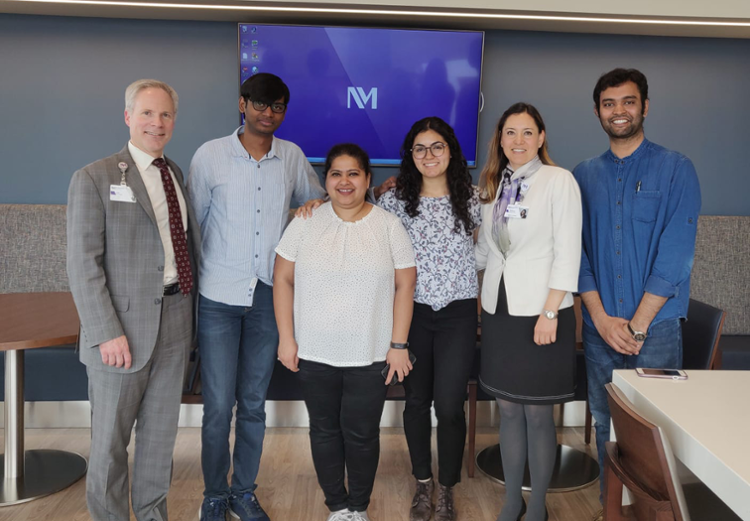Leveraging technical skills in an ever-changing health care industry
Alumna Rebeca Khorzad (MEM ’05) reflects on her connection to the MEM program, the current challenges facing the health care industry, and how MEM students have the technical savvy to solve those problems.

Since Rebeca Khorzad graduated from Northwestern Engineering’s Master of Science in Engineering Management in 2005, the health care industry has changed dramatically. From telehealth delivery to new wearable devices, the state of health care has never looked so technologically sophisticated.
With new technology comes new challenges. As a program manager at Northwestern Medicine Lake Forest Hospital, Khorzad has an inside look at how health care is changing. She finds her studies in the MEM program and her work with MEM students are helping her rise to those challenges.
How do you describe your role at Northwestern Medicine?
In my current role in hospital operations, I am responsible for driving initiatives that will assure we meet our current and future demand in an efficient manner. We achieve this by a combination of system redesign initiatives, such as eliminating waiting in a transition of care, that result in gaining capacity; balancing the resources to better match demand, like balancing staff needs closely to demand patterns, and shaping demand and informing decisions of capacity needs. Also, I have recently hired two MEM graduates, and I have worked with a dozen of them in the past two years.
How would you describe the state of the health care industry today?
Healthcare as an industry is in transformation more than ever. Health care systems have consolidated in the last decade and are working to be as efficient as they can be to provide the care patients need and want at the highest quality while the providers remain financially healthy. This consolidation has enabled sharing of resources such as tele-consults, such as from a physician in an academic center to a community hospital.
There have also been a lot of companies creating innovative products to help achieve safer and more efficient care, such as PIVO and Vocera communication apps. The COVID pandemic has accelerated this transformation in some cases, as in the increased availability of telehealth options for patients.
What excites you about the current state of the industry?
This state of transformation provides the perfect opportunity to innovate and apply engineering methodologies not commonly used in health care. An example is applying user-centered design and simulation when designing new processes, such as performing blood draws without the patient needing to wait when they are walk-in patients.
It is also an exciting time of change for health care delivery. The introduction of wearable devices that can monitor and alert care providers of indicators of disease opens the door for designing new care models.
What are the biggest challenges facing the industry?
There are several.
First, hospital regulations have not kept up with the fast pace of change in health care. Examples of this were exposed during the COVID-19 pandemic, when requirements for hospital beds or medical supplies were waived because the need was overwhelmingly urgent.
Also, health care data exists in different places with different formats that are not always compatible. This limits the usability of this data.
In addition, price transparency is needed to open the door for systems redesign.
And, on a more day to day level, problem experts—or front line clinicians-- need more space and time to work with teams such as MEM student teams who can help them solve their operational “pains” more quickly.
How are MEM students equipped to solve these challenges?
MEM students are different from MBA or master’s in public health students because they understand the business issues from the finance and marketing side as well as the analytical and technical side of health care. This is important because there is a need for health care management professionals who understand the data science, decision analysis tools, operations research, and industrial engineering components that go into solving these types of health care challenges.
For example, MEM teams estimated the bed capacity needs for different levels of care patients. These MEM teams were almost like mini-consulting teams, and we were able to do it in house because we had these technically skilled professionals. MEM teams also have calculated the size of the “float pool” for nurses, which minimizes overtime and agency costs. They’ve also identified the largest operational opportunities for Surgical Services.

